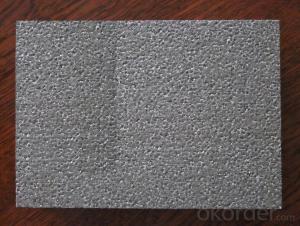EPS Insulation Foam Board: The Basics
Hey there! Let’s dive into the world of EPS insulation foam boards. I know, it sounds a bit technical, but trust me, it’s pretty fascinating once you get the hang of it. EPS stands for Expanded Polystyrene, and it’s a versatile material that’s used in a variety of applications, from packaging to construction. But today, we’re going to focus on its role in insulation.
What is EPS Insulation Foam Board?
EPS insulation foam boards are made from expanded polystyrene, which is a lightweight, rigid material with excellent thermal insulation properties. It’s a popular choice for insulation because it’s cost-effective, easy to handle, and has a low thermal conductivity, which means it does a great job of keeping heat in or out, depending on what you need.
Why Choose EPS for Insulation?
So, why should you consider EPS for your insulation needs? Well, there are several reasons. First, it’s incredibly durable. Once it’s installed, you can expect it to last for a long time without any issues. Second, it’s environmentally friendly. EPS is made from recyclable materials and can even be recycled itself at the end of its life cycle. And lastly, it’s versatile. EPS insulation can be used in a variety of applications, including walls, roofs, and floors.
How is EPS Insulation Foam Board Made?
The process of making EPS insulation foam boards is quite interesting. It all starts with polystyrene beads, which are expanded using steam to create a rigid foam structure. This structure is then cut into boards of the desired size and thickness. The boards are lightweight, yet they provide excellent insulation due to their closed-cell structure, which traps air and creates a barrier against heat transfer.
Installing EPS Insulation Foam Board
When it comes to installing EPS insulation foam boards, it’s a relatively straightforward process. You’ll need to start by measuring the area you want to insulate and cutting the boards to fit. Once they’re cut, you can attach them to the surface using adhesive or mechanical fasteners. It’s important to ensure that the boards are installed correctly to maximize their insulation properties and prevent any air leaks.
Maintenance and Care for EPS Insulation Foam Board
Taking care of your EPS insulation foam board is pretty simple. Since it’s a low-maintenance material, you won’t have to worry about much. However, it’s a good idea to periodically check for any signs of damage or wear, and to replace any boards that are no longer providing adequate insulation.
The Future of EPS Insulation Foam Board
As we look to the future, EPS insulation foam boards continue to be a popular choice for insulation due to their many benefits. With advancements in technology and manufacturing processes, we can expect to see even better performance and more innovative applications for this material.
Wrapping Up
So, there you have it! EPS insulation foam boards are a fantastic option for anyone looking to improve the energy efficiency and comfort of their home or building. They’re durable, environmentally friendly, and versatile, making them a smart choice for a variety of insulation needs. Whether you’re a homeowner, a contractor, or just someone interested in learning more about insulation, I hope this overview has given you a better understanding of EPS insulation foam boards and their many benefits.

